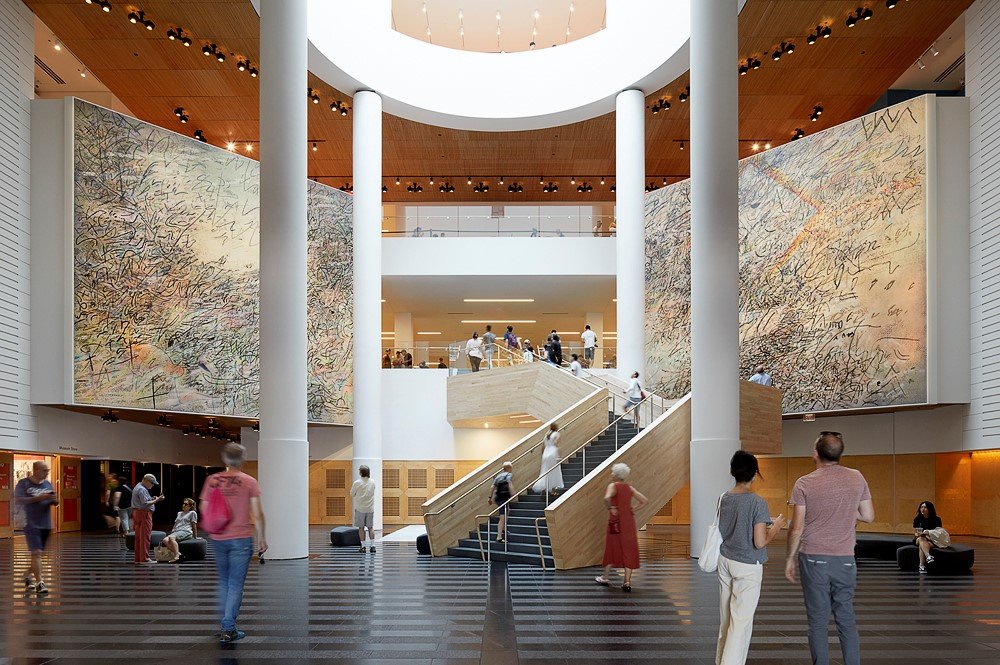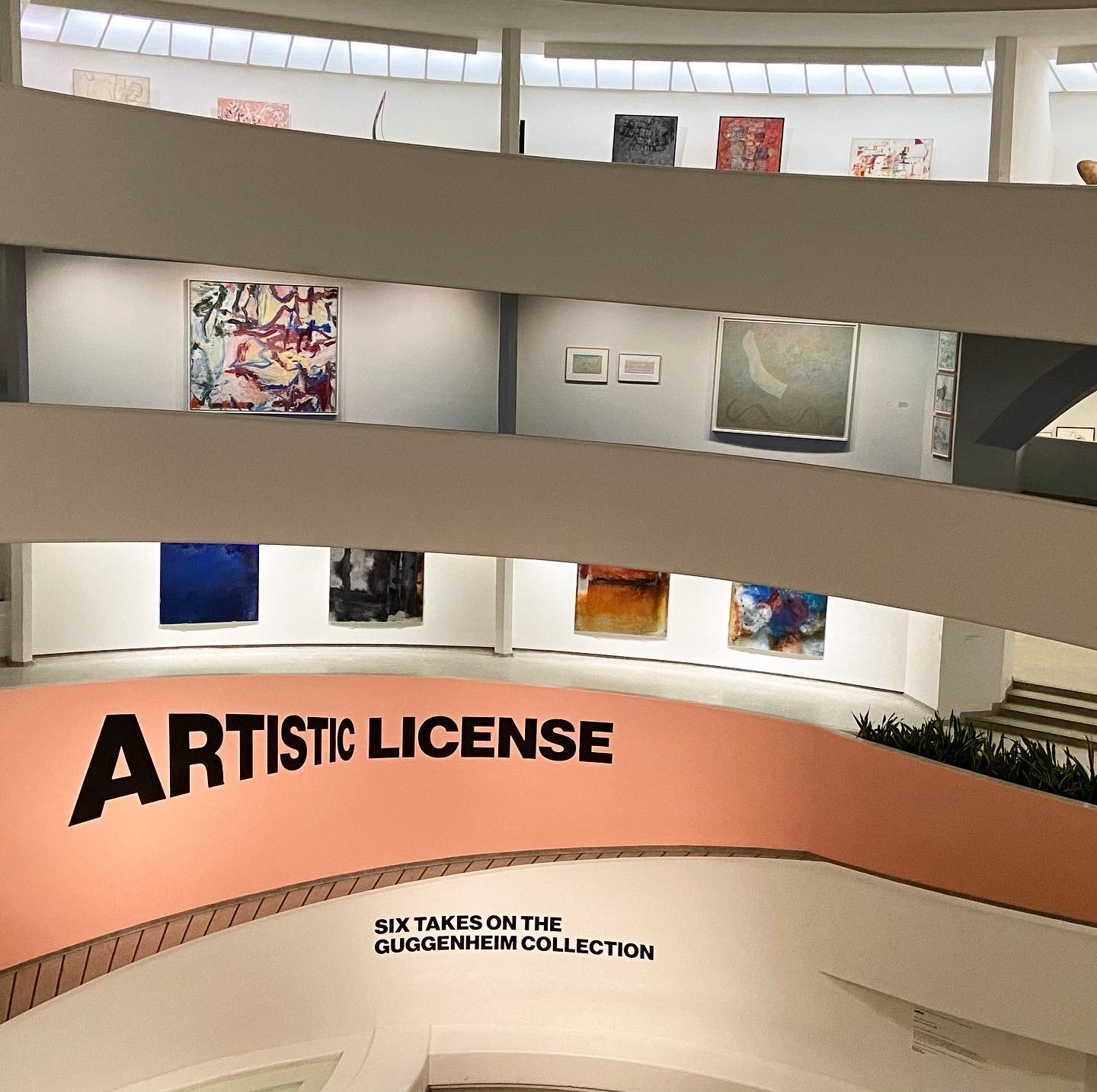Revisiting the trajectories of Gary Garrels and Nancy Spector

13 October 2023
The COVID-19 pandemic undoubtedly has shed light on the systemic manifestations of all kinds of racism and discrimination around the world. In 2020 the brutal murder of George Floyd ignited a worldwide outcry for social justice and anti-racism that is long overdue.
In this moment Black Lives Matter, with its focus on structural racism, was a call for an equitable society as a fundamental human right. Within cultural institutions it aimed to provoke rapid and effective change. It did so in an environment in which lack of equity was evident through that structural racism, but not limited to it. American institutions especially are a highly corporatized and sometimes precarious and violent environment in which staff can be fired on short notice.
Museum managements – whether liberal or conservative – suddenly had to demonstrate their values with respect to staffing and collection building, while being in reality completely checked by their past institutional logics and mechanisms. A widespread demand for change questioned them but didn’t offer realistic possibilities for abrupt systemic change.
In the climate of those days, the Museum Watch Committee was informed of a series of cases in the United States in which senior professionals were accused of racism and promptly compelled to resign. There were two cases in particular that appeared to be spectacular and even dramatic, those of Gary Garrels and of Nancy Spector. The Museum Watch group discussed them, but didn’t reach a shared understanding on how to proceed. It seemed problematic to make counterclaims or even discuss nuances, because the urgency and justness of the equity movement at that point in time were so intense and the refusals to acknowledge it so reactionary.
When revisiting the moment now, Museum Watch finds itself in almost the same position. Structural racism is a topic that can justly claim priority over other discussions because equity is a fundamental human right. In this context, there is respect for the many voices who have demanded the change that has seen senior museum professionals quickly removed from their positions.
Why would we raise these cases again, when their mediatic moment is past and at the same time the dust has not yet settled, at a moment also in which the topic itself remains so alive for many in museums and political life?
For both cases, it seems that there is more to consider than has been expressed. There is a level of ambiguity in both. Gary Garrels – who had been Senior Curator at the San Francisco Museum of Modern Art for 19 years – resigned promptly after using an offensive term during an internal staff meeting – the term being ‘reverse discrimination’ – for which he apologized, stating ‘I can no longer effectively work at SFMOMA and so I have offered my resignation.’ It was a radical and bewildering gesture by an advocate for diversity. Nancy Spector was the Guggenheim’s Artistic Director and Chief Curator, and had worked at the Museum for over 30 years when she was accused of racism by a Black curator. In October 2020 the museum announced that she had left the institution. At the same time, it was announced that an independent investigation commissioned by the Guggenheim Board had reviewed over 15,000 documents and found ‘no evidence’ of racial discrimination against the Black curator involved.
From our perspective, it is impossible to properly relate the different elements in these narratives in a way that makes convincing sense. It is clear that they are linked to broader institutional contexts. Another part of the story is that the Guggenheim Museum launched a detailed ‘Diversity, Equity, Access, and Inclusion Plan’ in August of the same year, obviously as a response to the letters that had used the case as a lever for systemic criticism. It is clear there are institutional issues that remain to be addressed, and the questions raised by Black Lives Matter are a key reference with respect to this unfinished work.
Alongside these primary questions there is another issue that concerns Museum Watch. The fact that the cases were played out on the shallow level of a mass-media scandal meant that the complex, structural issues raised received less reflection than they should have. This pertains to an understanding of the racism and the various structural facets that Black Lives Matter and those advocating for it aim to tackle. It needs to be an ongoing focus of address.
This mediatization, however, has another side we feel also needs to be given attention. The cases deeply affected the persons who were their focal point in a way we feel to be unjust, shallow and punitive. The mediatic moment has become a conclusive one in relation to their public image. Even if recently two in-depth articles on Nancy Spector have been published,[1] her public image remains that of someone with a past career overshadowed by an unresolved narrative under the bold title ‘Guggenheim Controversy.’[2] The artist Doris Salcedo has labelled this a ‘social death.’[3]
Apart from the primary urgencies playing out which we as Museum Watch will continue to focus on, apart from an assessment of the controversy and their resignations, apart from judgment, these are also colleagues with outstanding careers and we should be able to publicly reflect on what their past actions have meant over time, in order to achieve a common understanding of this moment and to restore their dignity.
Both colleagues actively sought and were committed to enhancing diversity within their museums. We even discussed within Museum Watch whether it was not partially their very openness that made them vulnerable. They were also excessively loyal to the institutions in which they worked, having served them for a long time.
In his resignation letter Gary Garrels wrote: ‘I deeply care about people from all backgrounds and all walks of life. I was raised in a family that believed social justice was fundamental and that racial discrimination was abhorrent. I have carried those values with me for my entire life. During my years at SFMOMA I have zealously sought to bring diversity to our programs and collections, beginning in my first chapter here from 1993-2000 and continuing now in the second chapter starting in 2008. Glenn Ligon’s New Work show with me was presented in 1996 in collaboration with the Gay and Lesbian Historical Society. Kara Walker worked with me for her first museum exhibition in 1997. Kerry James Marshall’s first survey exhibition was presented under my watch in 1998. The museum acquired work by all these artists at the time and we have continued to collect their work as much as possible. I worked with Doris Salcedo on her New Work show in 1999 and a work was acquired setting the stage for many more acquisitions so that SFMOMA now has the most in-depth collection of her work of any museum. I cite these historical examples as they will probably be lesser known at this point. For the present you will remember that last year the museum deaccessioned and sold a Rothko painting in order to take acquisition activity to another level of deep commitment for broadly diversifying the museum’s collection bringing in many major works by women, Black artists, Latino artists, Native and First Nations artists, and LGBTQ artists. I firmly believe that it is essential to collect works of art from artists of diverse backgrounds and from artists of all races. I believe that true diversity and the fight for real and meaningful equality is the important battle of our time. I will contribute what I can in any way that I can to reach this goal.’ Garrels was clearly committed to addressing issues of historic racism and histories of exclusion by tackling the museum collection and was therefore exemplary in creating institutional change.
Like Garrels, Nancy Spector is a notable museum professional with a strong track record of representing and enhancing diversity. From early in her career, she actively advocated, worked with and exhibited Black artists and artists of the most diverse backgrounds (Félix González-Torres, Cai Guo-Qiang, David Hammons, Mona Hatoum, Julie Mehretu, Gabriel Orozco, Stan Douglas and Kara Walker, to name a few). She was instrumental in hiring the Guggenheim’s first Black guest curators, the late Okwui Enwezor in 1996 and Chaédria LaBouvier in 2018, and its first Black full-time curator, Ashley James, in 2019. What’s more, Spector was instrumental in leading the development of the UBS MAP Global Arts Initiative, inaugurated in 2013, whereby the Guggenheim expanded its research and collaboration with local stakeholders and artists in South and Southeast Asia, Latin America, the Middle East and North Africa. Also, exhibitions such as Artistic License: Six Takes on the Guggenheim Collection, curated by Cai Guo-Qiang, Paul Chan, Jenny Holzer, Julie Mehretu, Richard Prince and Carrie Mae Weems, were designed, in Spector’s words, ‘to ask questions about the museum’s past aesthetic choices in relation to an ideology of exclusion.’[4]

Their commitments to diversity through programming is and was at least one level of addressing histories of exclusion and it has prepared the ground for what we can now continue to aspire to and accomplish. Looking at institutions holistically, as we need to do, from the inside out, in order to reflect, critique and correct them, requires a varying set of conversations, with different players. The perspectives and the outcome of the actions of colleagues such as Gary Garrels and Nancy Spector ought to be part of these conversations, to be reflected upon as components for a structurally different future.
Along with a much wider structural effort that remains so urgent, we believe it is also just to revisit, reclaim and cherish what they have realised within and for the institutions they served, their accumulation of historical knowledge, their experience in working with notable artists, their work ethics, their curiosity and passion for the arts of the world. We believe it may be part of a constructive effort to further qualify the wider field of discussion.
The future always starts from a critique of the past, but it is made sustainable also by the acknowledgement and understanding of earlier achievements.
In representation of the CIMAM Museum Watch Committee integrated by:
- Zeina Arida, Director, Mathaf: Arab Museum of Modern Art, Doha, Qatar
- Bart De Baere, (Chair) Director, M HKA Museum of Contemporary Art Antwerp, Belgium
- Malgorzata Ludwisiak, Artistic Director, The Museum of Modern Art in Warsaw, Warsaw, Poland
- Victoria Noorthoorn, Director, Museo de Arte Moderno de Buenos Aires, Buenos Aires, Argentina
- Agustin Perez Rubio, Independent Curator, Madrid, Spain
- Kitty Scott, Independent Curator, Toronto, Canada
- Yu Jin Seng, Deputy Director (Curatorial & Research), National Gallery Singapore, Singapore
CIMAM – International Committee for Museums and Collections of Modern Art – is an Affiliated Organization of ICOM.
- [1] See Helen Lewis, “The Guggenheim’s Scapegoat,” The Atlantic (November 2022), accessible at https://www.theatlantic.com/magazine/archive/2022/11/guggenheim-racism-controversy-curator-nancy-spector/671529/; and Francesco Bonami, “Il pregiudizio woke che premia l’artista nero e castiga la curatrices bianca,” Il Foglio (October 29, 2022), accessible at https://www.ilfoglio.it/cultura/2022/10/29/news/il-pregiudizio-woke-che-premia-l-artista-nero-e-castiga-la-curatrice-bianca-4605763/.
- [2] https://en.wikipedia.org/wiki/Nancy_Spector
- [3] Doris Salcedo, quoted in Lewis.
- [4] Nancy Spector in Leah Dickerman, “A Questionnaire on Decolonization: 35 Responses,” October 174 (Fall 2020), 109.